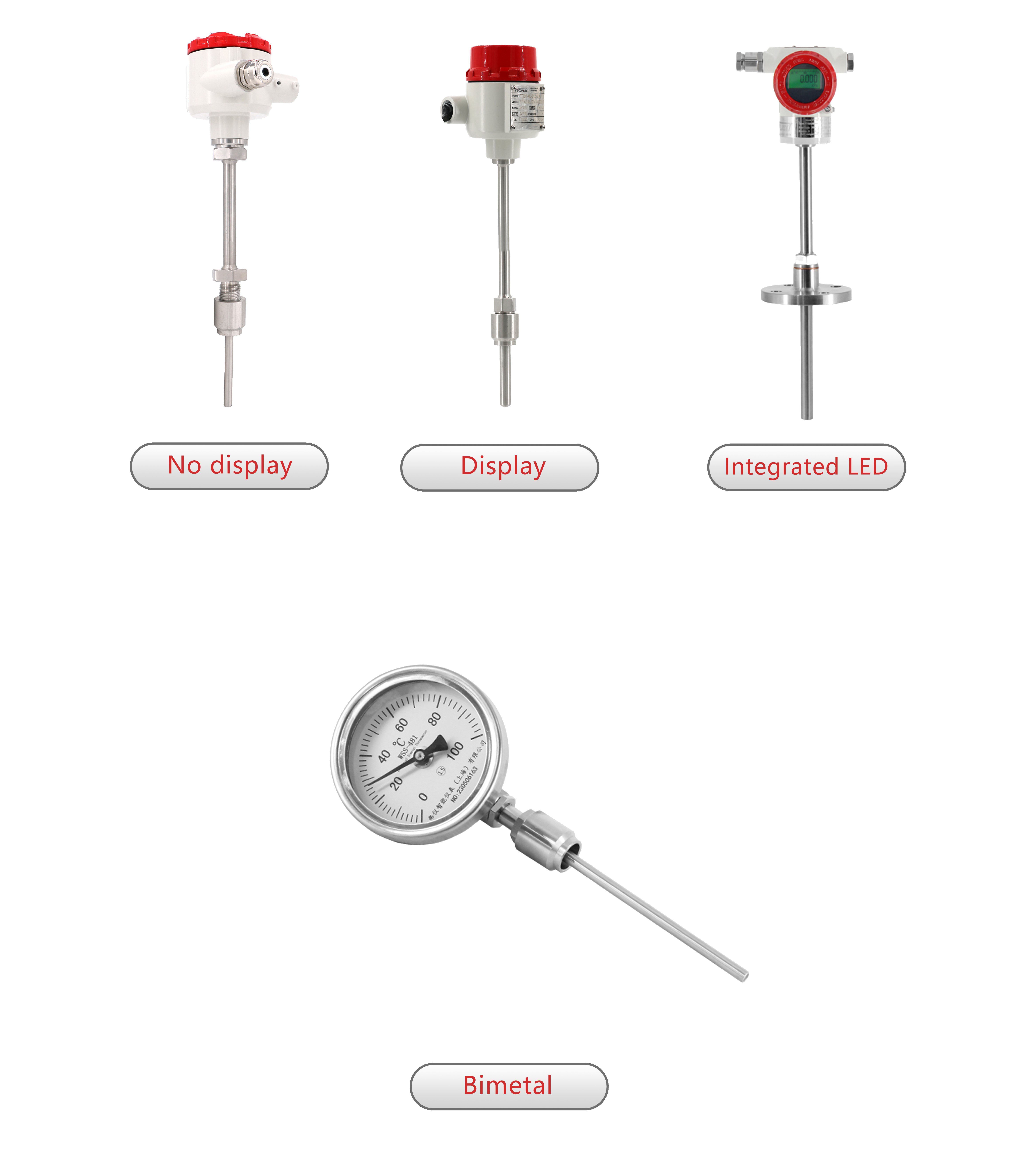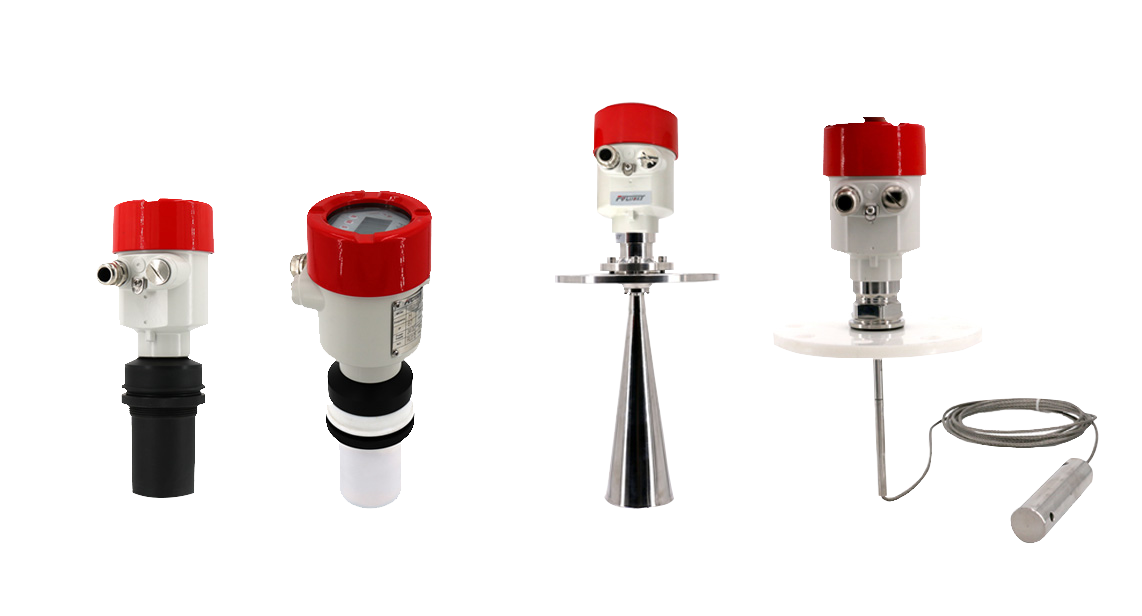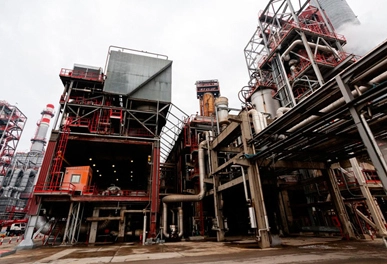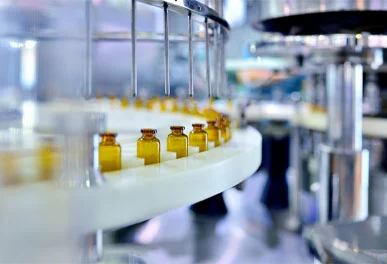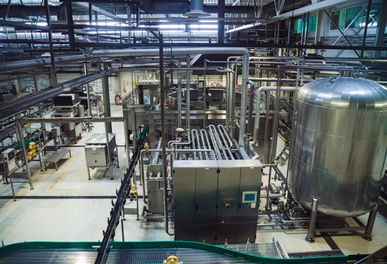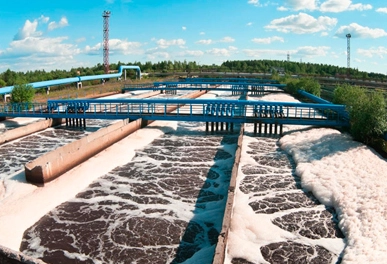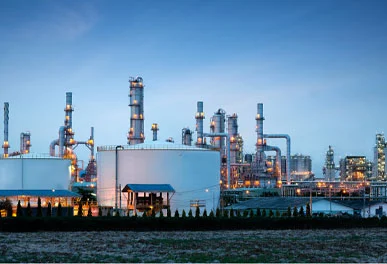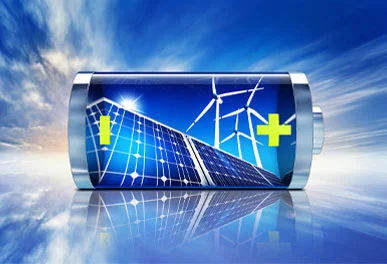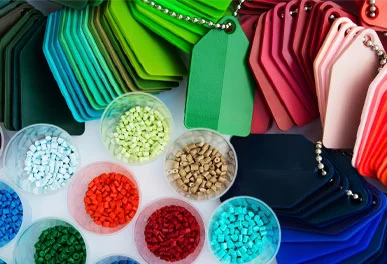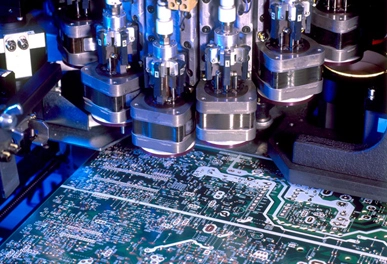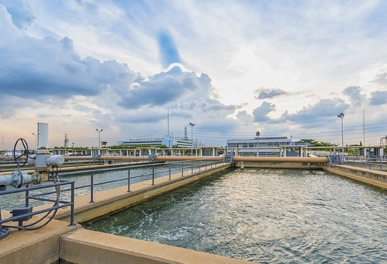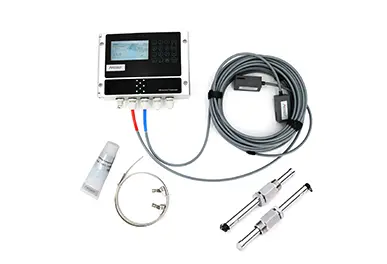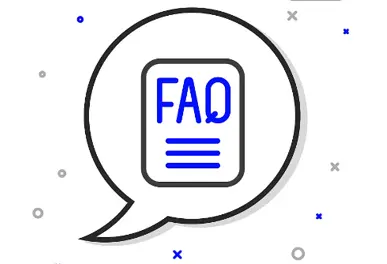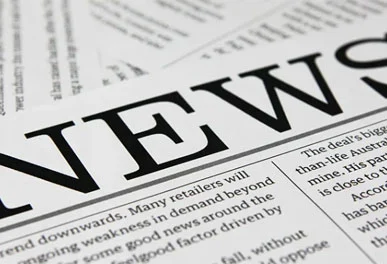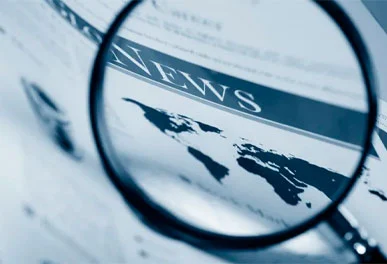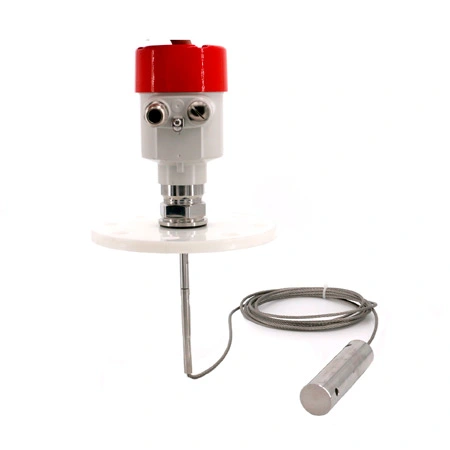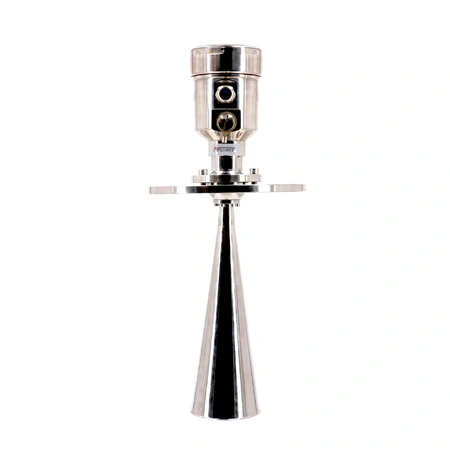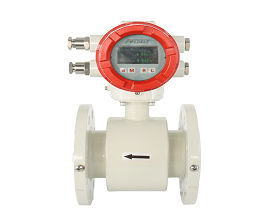Radar Level Meters
Radar level meters use microwave pulses to accurately measure the level of liquids or solids in tanks or silos. They offer reliable, non-contact measurement, unaffected by temperature, pressure, or gas vapors, making them ideal for harsh environments.
How Do I Choose A Radar Level Transmitter?
Choosing the right radar level transmitter for your application involves considering several key factors to ensure accurate, reliable measurements under your specific operating conditions. Here’s a guide to help you make an informed decision:
1. Type of Material to be Measured
Liquids or Solids: Different radar level transmitters are optimized for either liquids or solids. Liquids require transmitters that can handle varying degrees of reflectivity, while solids might need devices capable of dealing with low dielectric constants and uneven surfaces. A horn type radar level transmitter is a dependable option for you to consider.
2. Process Conditions
Temperature and Pressure: Ensure the transmitter can operate within the temperature and pressure range of your application.
Chemical Compatibility: The wetted parts of the transmitter should be compatible with the process material to avoid corrosion or degradation.
3. Dielectric Constant of the Material
4. Frequency
High Frequency (e.g., 26 GHz): Better for high dielectric materials and applications requiring narrow beam angles, such as in tanks with internal obstructions.
Low Frequency (e.g., 6 GHz): Suitable for low dielectric materials and applications where the beam can be wider.
5. Installation Constraints
Tank Geometry and Size: Consider the shape and size of the container. The mounting location, presence of obstructions (like agitators, ladders), and the need for a narrow beam angle to avoid these obstructions are important considerations.
Mounting Options: Ensure the transmitter’s mounting options are compatible with your tank or silo.
What Is The Difference Between Ultrasonic And Radar Level Transmitter?
1. Frequency Range:
Ultrasonic transmitters operate in the sound frequency range (20 kHz to several MHz).
Radar transmitters use microwave frequencies, typically in the GHz range.
2. Material and Environmental Suitability:
Ultrasonic transmitters are less effective in environments with high dust, vapors, or extreme temperatures, as these conditions can absorb or scatter sound waves.
Radar transmitters, especially those using higher frequencies, can perform reliably under a wide range of conditions, including high pressure, temperature extremes, and in the presence of vapors or dust.
3. Accuracy and Reliability:
Ultrasonic devices might be affected by environmental conditions such as temperature fluctuations and humidity, which can impact the speed of sound and, consequently, measurement accuracy.
Radar devices are generally less affected by environmental conditions, making them more accurate and reliable in harsh or volatile environments.
4. Cost:
Ultrasonic level transmitters are typically less expensive than radar transmitters, making them a cost-effective option for applications where they can perform reliably.
Radar level transmitters, while generally more expensive, offer superior performance in challenging conditions, which can justify their higher cost in many industrial applications.
5. Application Examples:
Ultrasonic transmitters are well-suited for water and wastewater applications, as well as some bulk solids where the environment is relatively clean and free of vapors.
Radar transmitters are preferred in the petrochemical industry, for measuring levels in high-pressure tanks, or where there are high temperatures or volatile materials.
Conclusion:
The choice between ultrasonic and radar level transmitters depends on the specific requirements of the application, including the type of material being measured, environmental conditions, required accuracy, and budget constraints. Radar level transmitters offer advantages in challenging conditions and for materials with low dielectric constants, while ultrasonic transmitters are a cost-effective solution for less demanding applications.
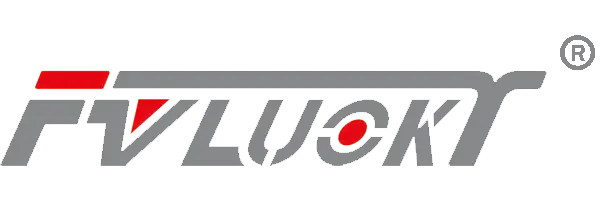
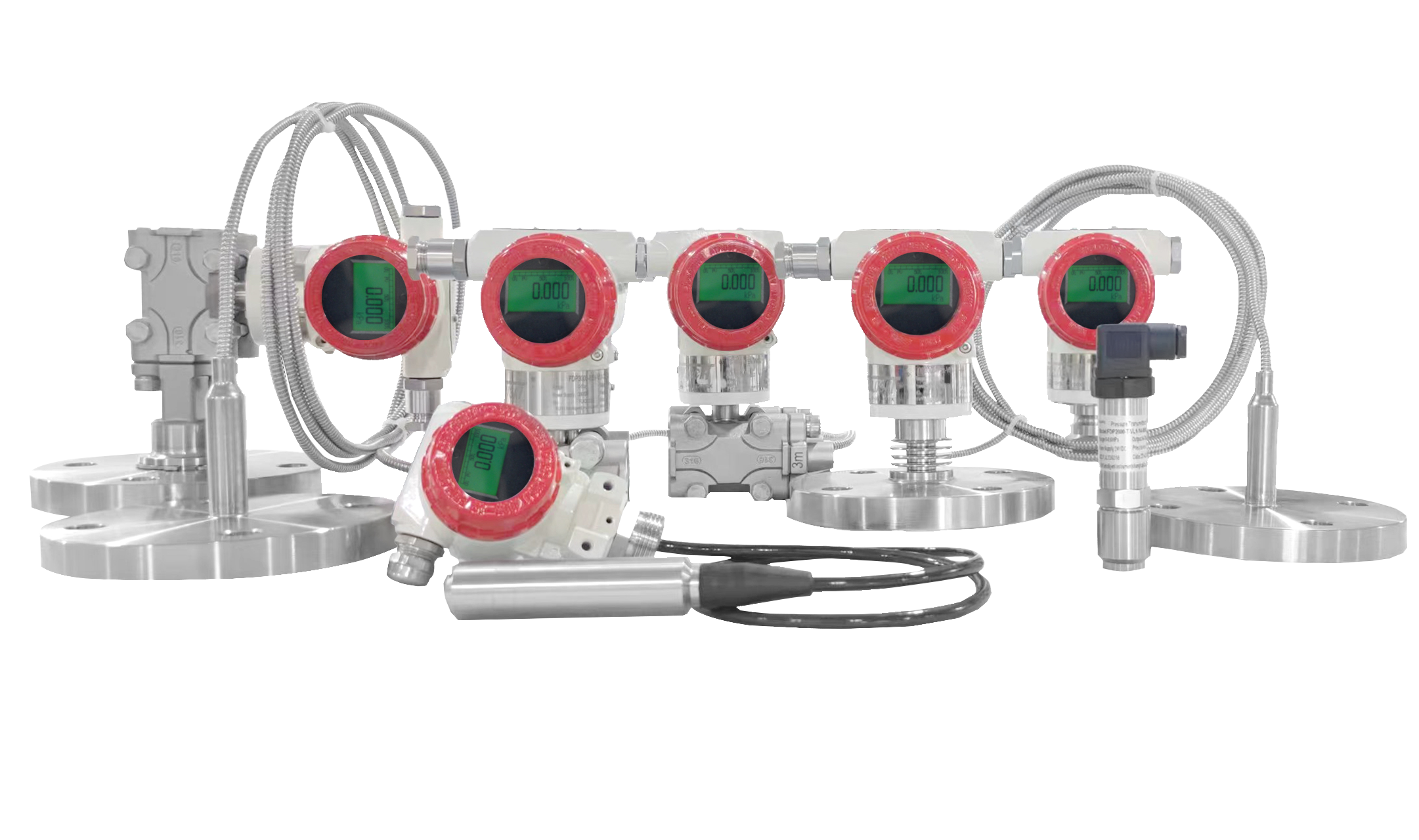 Smart Pressure Transmitters
Smart Pressure Transmitters